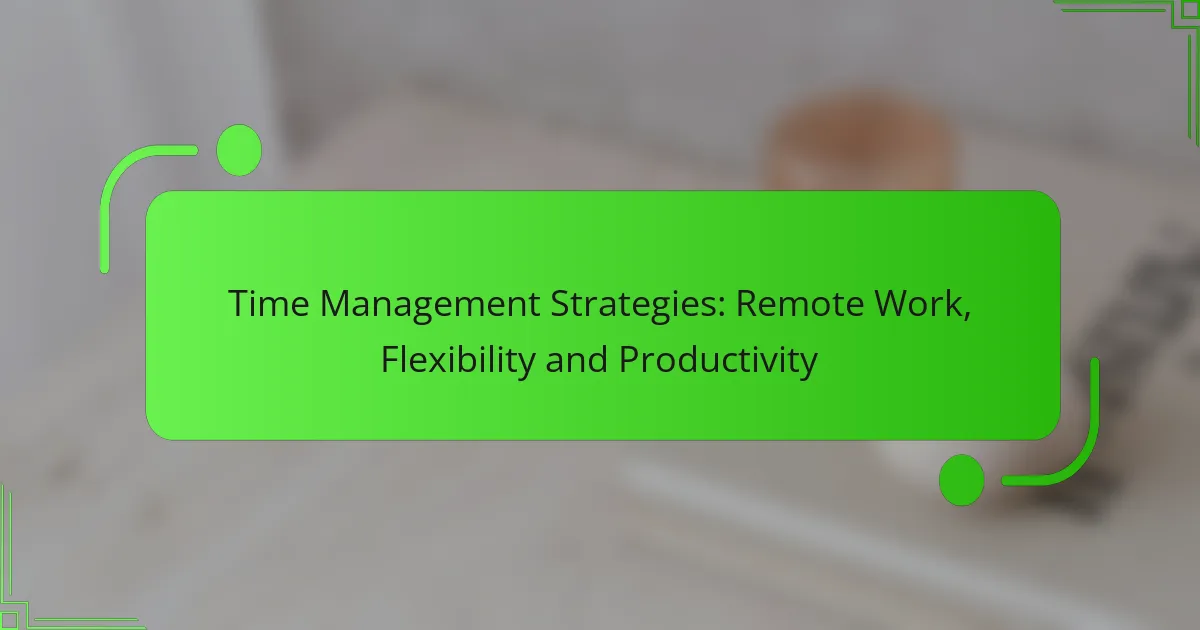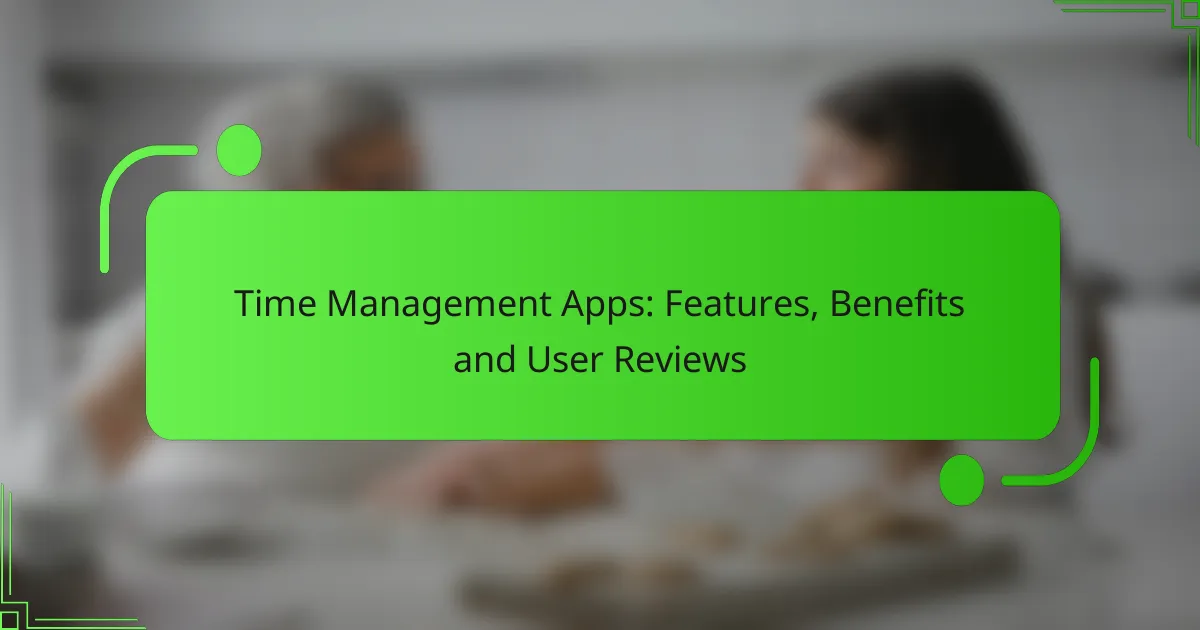In the realm of remote work, effective time management is crucial for maximizing productivity and maintaining focus. By employing structured techniques such as time-blocking and the Pomodoro Technique, remote workers can navigate their tasks more efficiently. Additionally, leveraging time management tools can help individuals and teams stay organized, prioritize effectively, and meet deadlines while enjoying the flexibility that remote work offers.
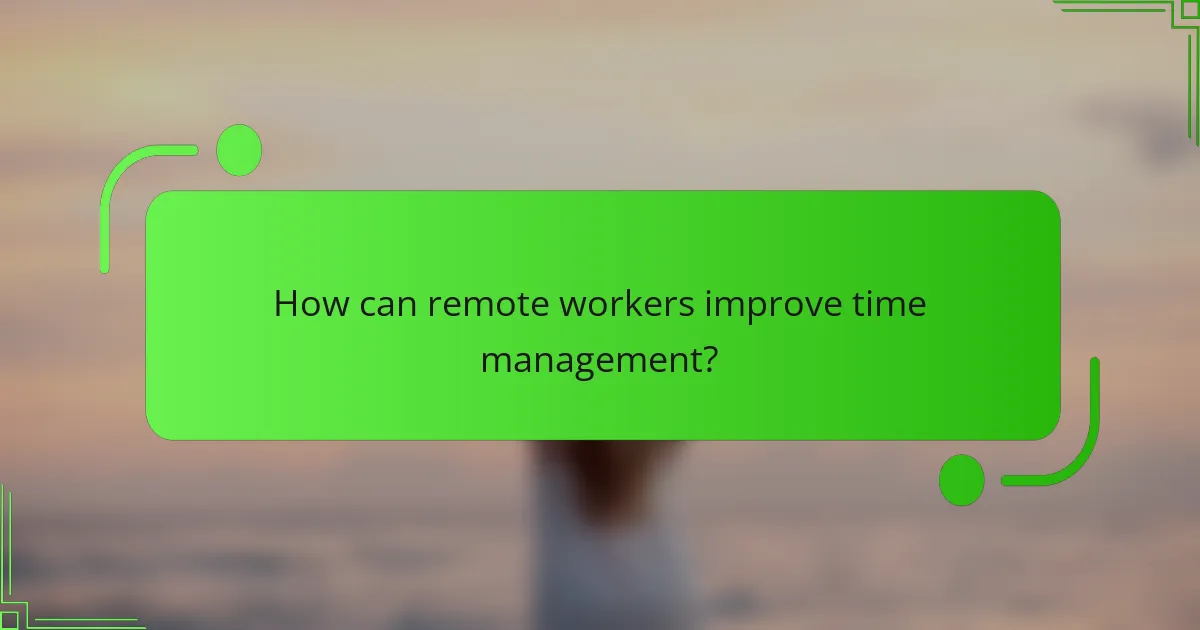
How can remote workers improve time management?
Remote workers can enhance their time management by adopting structured techniques that promote focus and efficiency. By implementing strategies like time-blocking, the Pomodoro Technique, and setting clear daily goals, they can better navigate their workdays and boost productivity.
Utilizing time-blocking techniques
Time-blocking involves scheduling specific blocks of time for different tasks throughout the day. This method helps remote workers allocate their hours effectively, reducing distractions and enhancing focus. For example, a worker might dedicate 9 AM to 11 AM for project work, followed by 11:30 AM to 12 PM for emails.
To implement time-blocking, start by identifying your most productive hours and the tasks that require deep focus. Use a calendar app to visually map out your day, ensuring to include breaks to avoid burnout. A common pitfall is over-scheduling; it’s crucial to leave some flexibility for unexpected tasks.
Implementing the Pomodoro Technique
The Pomodoro Technique is a time management method that breaks work into intervals, traditionally 25 minutes long, followed by a 5-minute break. This approach helps maintain high levels of concentration while preventing fatigue. After completing four intervals, a longer break of 15-30 minutes is recommended.
To apply this technique, use a timer to keep track of your work sessions and breaks. This can be done with a simple kitchen timer or a dedicated app. Be cautious of distractions during the 25-minute work period; consider using noise-canceling headphones or a dedicated workspace to enhance focus.
Setting clear daily goals
Establishing clear daily goals is essential for remote workers to maintain direction and motivation. By outlining specific, achievable objectives at the start of each day, workers can prioritize tasks effectively and measure their progress. For instance, a goal could be to complete a report by the end of the day or to respond to all client emails.
To set effective goals, use the SMART criteria—Specific, Measurable, Achievable, Relevant, and Time-bound. This ensures that your goals are realistic and aligned with your overall objectives. Regularly review your goals to adjust them as needed, and avoid setting too many goals at once, which can lead to overwhelm.
Leveraging productivity tools like Trello
Productivity tools such as Trello can significantly enhance time management for remote workers by providing a visual way to organize tasks. Trello uses boards, lists, and cards to help users track progress and collaborate with team members. This can streamline workflows and improve accountability.
To get started with Trello, create boards for different projects and add cards for individual tasks. You can assign due dates, add checklists, and even integrate other tools like Google Drive. However, be mindful of overcomplicating your boards; keeping them simple and intuitive will maximize their effectiveness. Regularly review and update your boards to stay on top of your tasks.
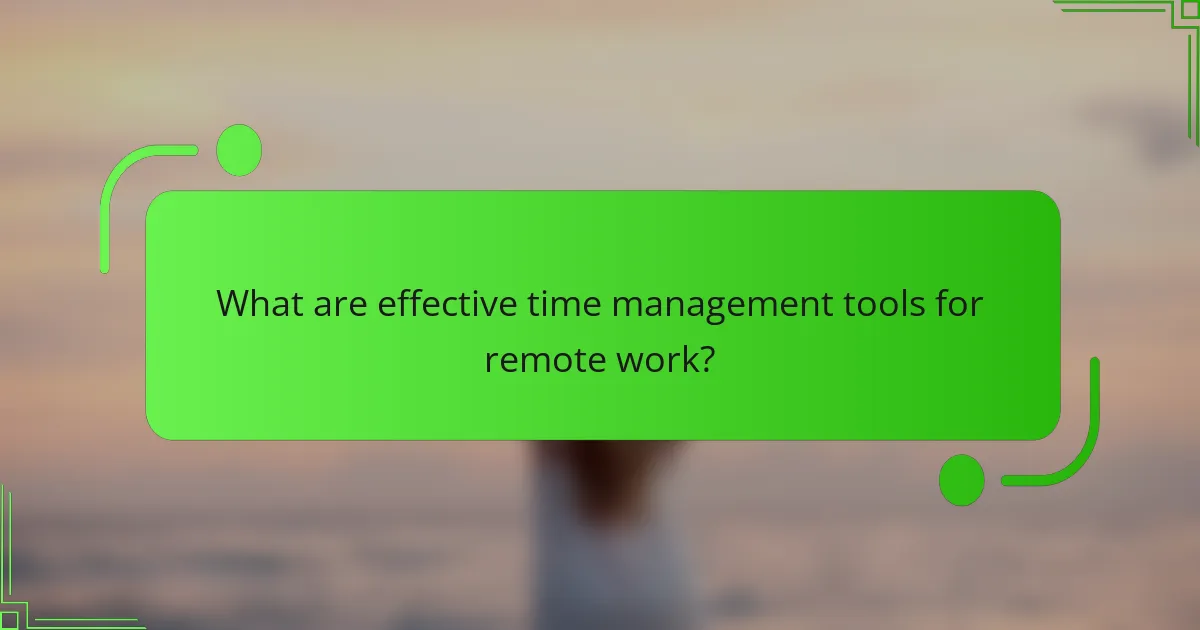
What are effective time management tools for remote work?
Effective time management tools for remote work help individuals and teams stay organized, track their time, and prioritize tasks. These tools enhance productivity by providing clarity and structure to daily activities, making it easier to meet deadlines and achieve goals.
Asana for project management
Asana is a robust project management tool that allows teams to collaborate on tasks and projects seamlessly. Users can create projects, assign tasks, set deadlines, and monitor progress through various views such as lists, boards, and calendars.
To maximize its effectiveness, consider using Asana’s templates for common workflows and integrating it with other tools like Slack or Google Drive. This integration can streamline communication and document sharing, enhancing overall project efficiency.
Clockify for time tracking
Clockify is a time tracking tool that enables users to monitor how much time they spend on different tasks and projects. It offers features like manual time entry and automatic tracking, making it suitable for various work styles.
To effectively use Clockify, set clear categories for your tasks and regularly review your time reports. This practice can help identify areas where you may be spending too much time and allow for adjustments to improve productivity.
Todoist for task organization
Todoist is a task management app that helps users organize their to-do lists and prioritize tasks effectively. With features like due dates, labels, and project organization, it allows for a clear overview of what needs to be accomplished.
To get the most out of Todoist, utilize its recurring tasks feature for regular activities and set priority levels for tasks based on urgency. This approach can help ensure that critical tasks are completed on time while maintaining a manageable workload.

How does flexibility impact productivity in remote work?
Flexibility significantly enhances productivity in remote work by allowing individuals to tailor their work environment and schedule to their personal needs. This adaptability leads to increased motivation and efficiency, as employees can work in ways that best suit their individual styles and circumstances.
Increased autonomy leads to better focus
When employees have the freedom to choose their work methods, they often experience heightened focus and engagement. Autonomy allows individuals to create a workspace that minimizes distractions, whether that means a quiet home office or a bustling café.
For instance, a remote worker may find that they concentrate better in the early morning hours, free from the usual office interruptions. This personalized approach can lead to higher quality output and a greater sense of job satisfaction.
Flexible hours accommodate personal peak performance times
Flexible work hours enable individuals to align their tasks with their natural productivity rhythms. Many people have specific times of day when they feel most alert and capable, and remote work allows them to schedule their most challenging tasks during these peak periods.
For example, a worker who is a night owl might choose to tackle complex projects in the evening when they feel most energized. This flexibility can lead to improved performance and a more balanced work-life integration.

What are common challenges in managing time remotely?
Common challenges in managing time remotely include distractions from the home environment and difficulty in setting boundaries between work and personal life. These issues can significantly impact productivity and overall work-life balance.
Distractions from home environment
Working from home often introduces various distractions that can hinder focus and efficiency. Common interruptions include household chores, family members, pets, and even the temptation of leisure activities like television or social media.
To mitigate these distractions, create a dedicated workspace that is separate from personal areas. Establishing a routine can also help signal to others when you are unavailable, reducing interruptions during work hours.
Difficulty in setting boundaries
Remote work can blur the lines between professional and personal time, making it challenging to set clear boundaries. Without a defined schedule, many remote workers find themselves working longer hours or struggling to disconnect from work-related tasks.
To establish effective boundaries, set specific work hours and communicate them to colleagues and family members. Use tools like calendar blocking to allocate time for work and personal activities, ensuring a balanced approach to your day.
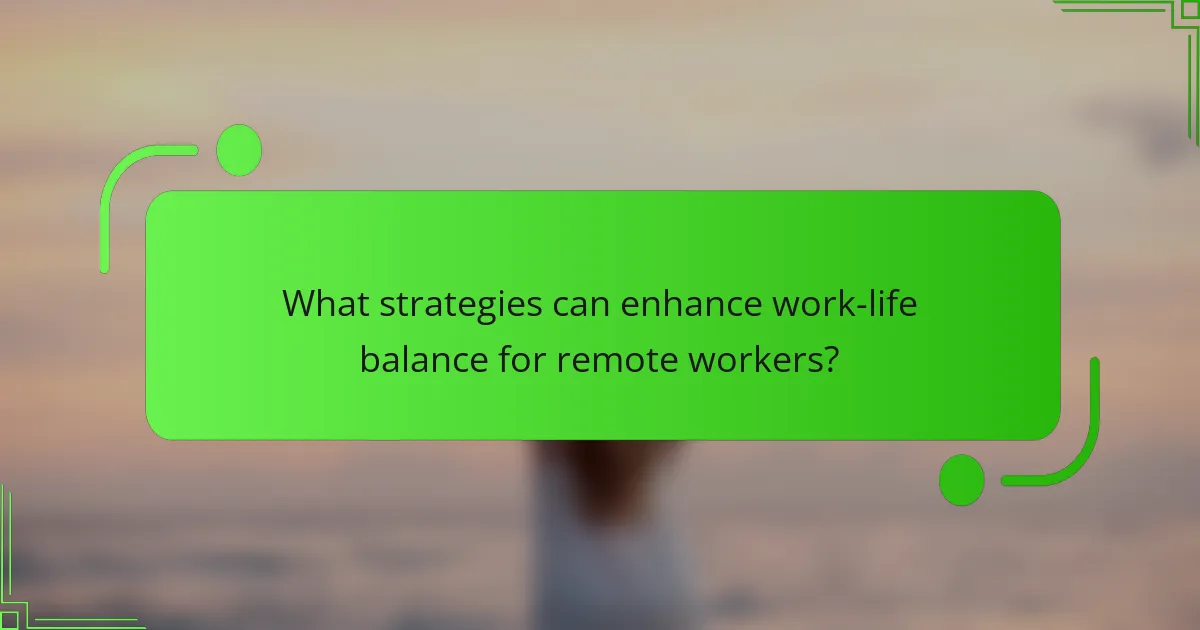
What strategies can enhance work-life balance for remote workers?
Enhancing work-life balance for remote workers involves implementing strategies that create clear boundaries between work and personal life. Key approaches include establishing a dedicated workspace and creating a consistent work schedule to maintain productivity while ensuring personal time is respected.
Establishing a dedicated workspace
Creating a dedicated workspace is essential for remote workers to separate professional tasks from personal activities. This space should be quiet, comfortable, and equipped with necessary tools to minimize distractions. Ideally, it should be distinct from areas associated with relaxation or leisure.
Consider using a spare room, a corner of your living area, or even a well-organized desk. Ensure your workspace is ergonomic and well-lit, which can enhance focus and reduce fatigue. Personalizing the space can also boost motivation, but keep it professional to maintain a work mindset.
Creating a consistent work schedule
A consistent work schedule helps remote workers establish a routine that promotes productivity and work-life balance. Set specific start and end times for your workday, and stick to them as closely as possible. This routine signals to both yourself and others when you are available for work and when you are not.
Incorporate regular breaks to recharge, ideally every hour or so, to maintain focus and energy. Use tools like calendars or task management apps to plan your day and prioritize tasks. Avoid the common pitfall of overworking by setting clear boundaries and communicating your schedule to family or housemates.
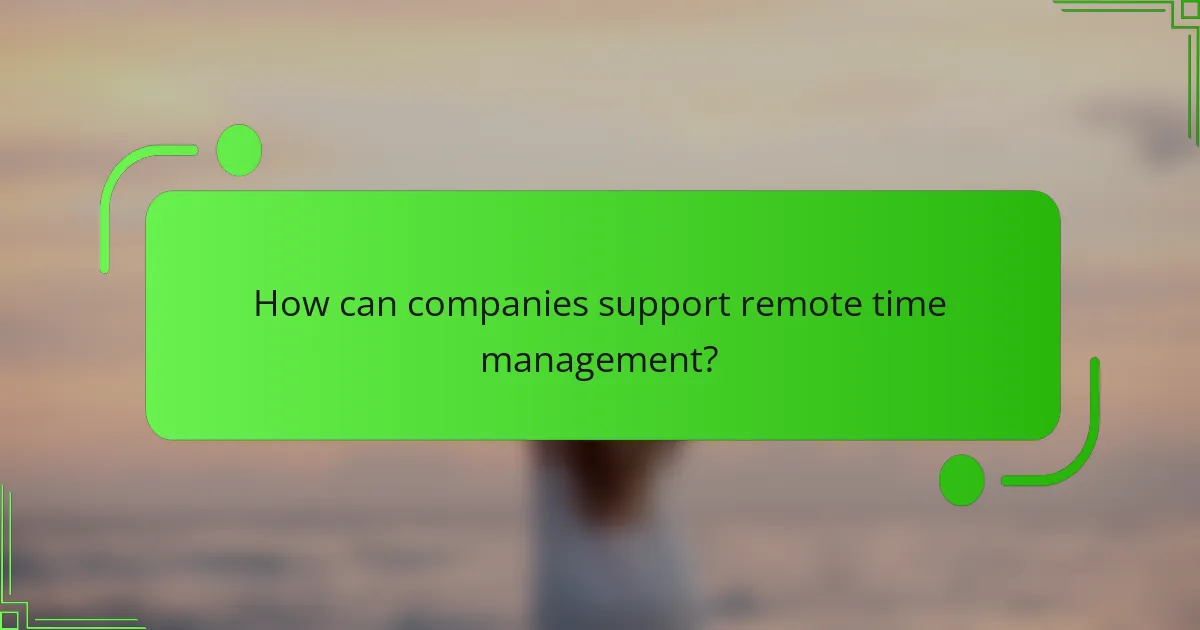
How can companies support remote time management?
Companies can enhance remote time management by providing essential tools and resources that facilitate productivity. This includes access to software solutions and training programs that equip employees with effective time management techniques.
Providing access to productivity software
Access to productivity software is crucial for effective remote time management. Tools like project management applications, time tracking software, and communication platforms help employees organize tasks, monitor progress, and collaborate efficiently.
Consider implementing popular tools such as Trello, Asana, or Slack. These platforms can streamline workflows and reduce time spent on administrative tasks, allowing employees to focus on their core responsibilities.
When selecting software, ensure it integrates well with existing systems and is user-friendly. Providing a range of options can cater to different work styles and preferences, enhancing overall productivity.
Offering training on time management techniques
Training on time management techniques empowers employees to optimize their work schedules and prioritize tasks effectively. Workshops or online courses can introduce methods such as the Pomodoro Technique, time blocking, or the Eisenhower Matrix.
Encourage employees to experiment with different strategies to find what works best for them. Regular check-ins can help reinforce these techniques and provide opportunities for sharing best practices among team members.
Additionally, consider offering resources such as articles, videos, or webinars that employees can access at their convenience. This flexibility allows them to learn at their own pace and apply new skills to their daily routines.

What are the benefits of time management in remote work?
Effective time management in remote work enhances productivity and flexibility, allowing individuals to maximize their output while maintaining a work-life balance. By organizing tasks and prioritizing responsibilities, remote workers can achieve their goals more efficiently.
Improved efficiency and output
Time management directly contributes to improved efficiency and output by helping remote workers allocate their time wisely. Setting clear priorities and deadlines enables individuals to focus on high-impact tasks, reducing time spent on less important activities.
To enhance efficiency, consider using techniques like the Pomodoro Technique, which involves working in focused bursts followed by short breaks. This method can help maintain concentration and prevent burnout, leading to higher overall productivity.
Additionally, utilizing digital tools such as task management apps can streamline workflows. These tools allow for easy tracking of progress and deadlines, ensuring that remote workers stay organized and on task throughout their day.
